| The early 1930s was a difficult time for the company, due to
the depression, which reached an all-time low in 1932, and the
emergence of a serious rival in the form of Bedford commercial
vehicles, launched by General Motors in 1931.Trade didn't start
to pick-up until 1933. Luckily Guy
continued to develop military vehicles, and was sustained by
many orders from the War Office.
It was a worrying time for the
country due to the goings-on in Germany as a result of the rise
to power of Adolf Hitler and the National Socialist Party.
|

Thomas Henderson's Guy 'ON' from 1930.
The 'ON' was a
lightweight chassis introduced in
1926. |
|
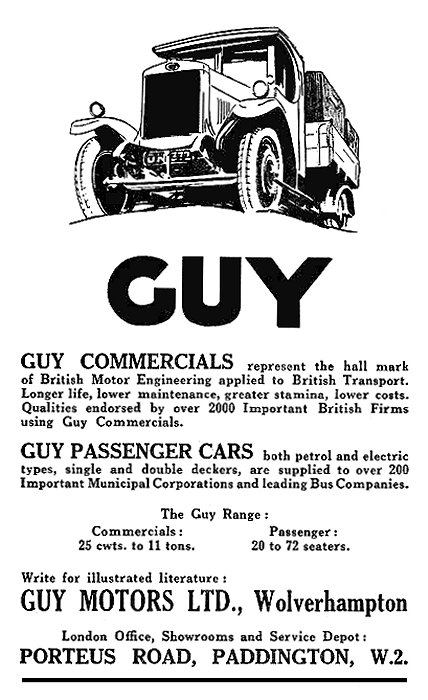
An advert from 1930. Courtesy of David
Parsons. |
The
1930 Road Traffic Act greatly influenced the construction of
commercial vehicles. A 30 mph. speed limit was imposed on all
goods vehicles with an unladen weight of up to 50 cwt.
Vehicles
weighing more were not allowed to exceed 20 mph. This encouraged
the development of lighter vehicles.
In 1930 Guy introduced the 'Warrior' 4-wheeled chassis,
powered by a Gardner diesel engine, and the 6-wheeled 'Goliath',
a development of the 'Warrior'. Both had driven rear axles, and
8 speed gear boxes.
The 'Goliath' could accommodate a 22 ft.
long body, and carry a 12 ton load. |
|

An advert from 1930. |
| Read about a long
service Guy lorry. |
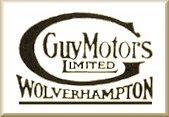 |
The development of the all-important Guy military vehicles
continued with the launch of 6-wheel and 8-wheel driven vehicles
which could go almost anywhere, even across a 6 ft. wide trench,
without falling into it.
|
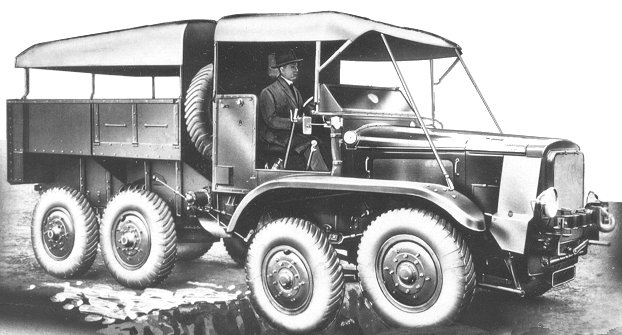
A Guy 8-wheel driven vehicle crossing a
trench.
Read about the Guy patents
that made the multi-wheel
driven vehicles a possibility |
 |
| |
|
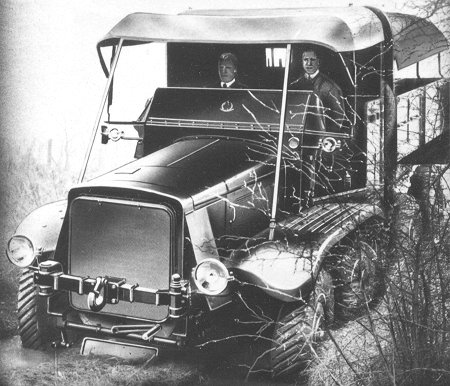 |
Another view of an 8-wheel driven Guy.
This one is crossing an area of extremely
boggy ground. |
| |
|
Read about the oil-engined
models in the Guy range |
 |
| |
|
| Guy reached another important milestone in the development
of new products with the launch of the 'Wolf' chassis, and the
'Arab' bus chassis in 1933.
The new vehicle, built to carry 2 tons,
included some new improvements in design, that used more
expensive, and lighter materials.
At the time, the weight of an
unladen vehicle was usually about the same as the maximum weight
of load carried. |

Sir Malcolm Campbell at the launch of the
'Wolf' chassis. |
| The new vehicles were more
efficient, and had lower running costs. The new chassis was
launched at the Park Lane factory by Sir Malcolm Campbell, on
11th May. The 'Wolf' was
soon followed by the 3 to 4 ton 'Vixen', and the 'Otter'. The
'Vixen', powered by a Meadows 3.3 litre, 4-cylinder engine
became a popular product. The 'Otter', which could carry a load
of 6 tons weighed under 2½ tons fully equipped.
|

Adjusting a 'Wolf' chassis after a road test.
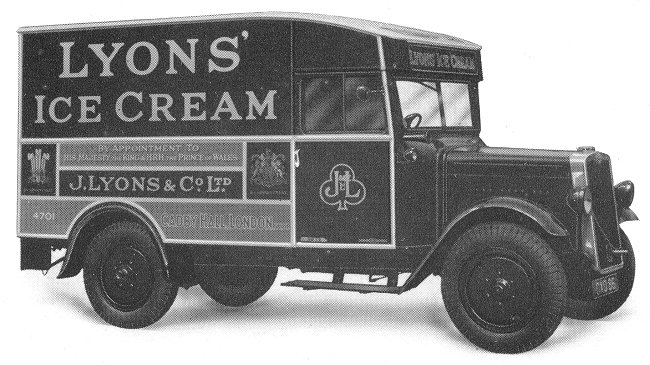
A 'Wolf' 2 tonner.
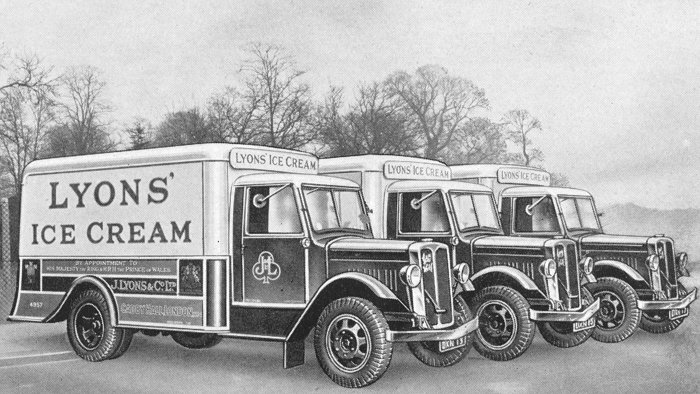
Three 'Wolf' Lyons' ice cream vans.
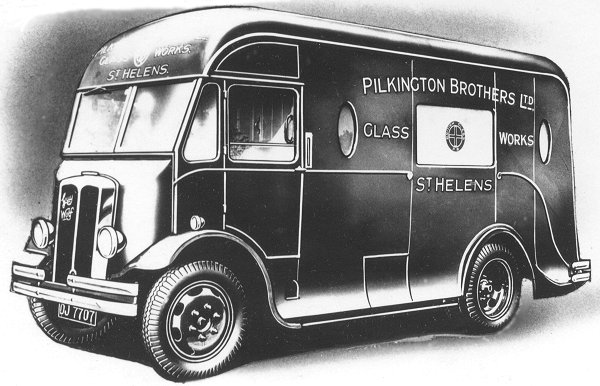
A 'Wolf' 2 tonner with forward control.
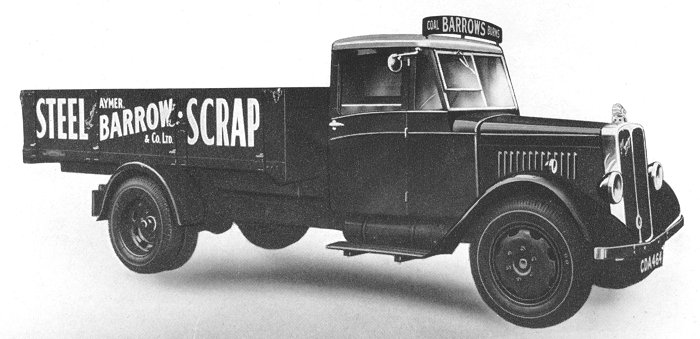
Another 'Wolf' 2 tonner.
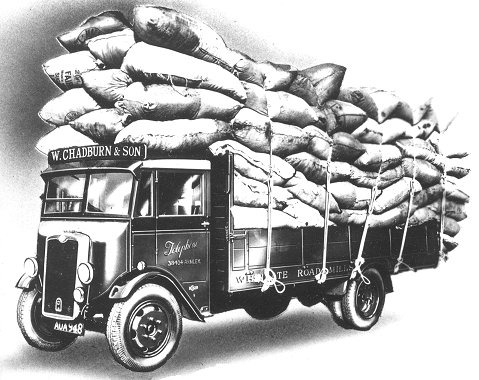 |
A fully laden 'Wolf' 2 to 3 tonner, a
lighter version of the 'Wolf' 2 tonner which was more economical
to run. It was powered by a
Meadows 3.3 litre, 4-cylinder engine, and available with normal
or forward control. |
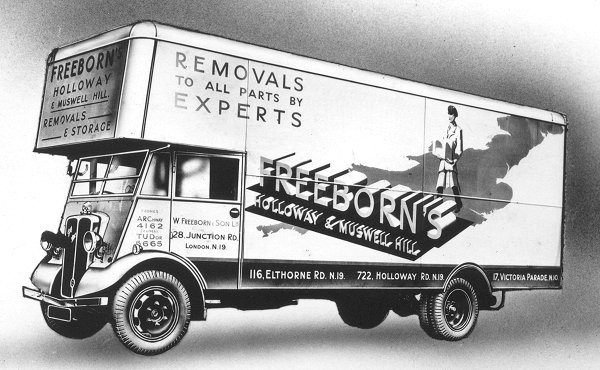
A Guy 'Vixen' van.

A Guy 'Vixen' lorry.
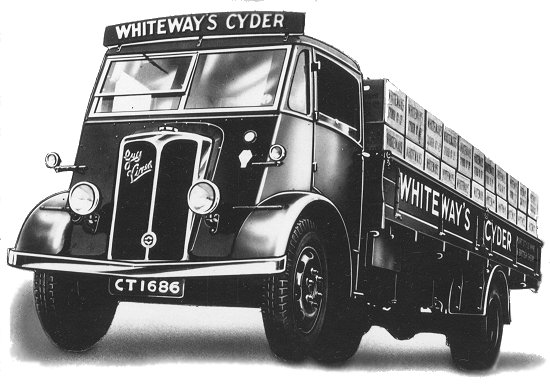
Another 'Vixen' lorry.
| The Guy 'Vixen' furniture van that has
recently been acquired by Specialised Movers of Sheffield.
It is from 1938, and is powered by a Meadows
6-cylinder petrol engine.
It is believed to be the only pre-World War
2 Vixen still running.
Courtesy of Nigel Shaw, who kindly sent the
photo. |
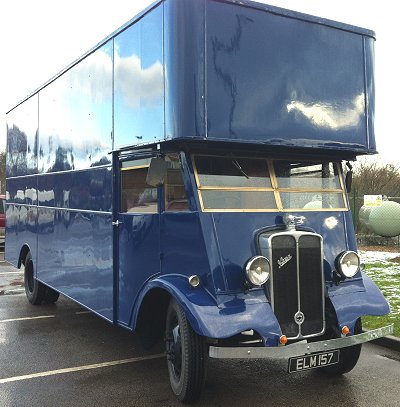 |
 |
Another view of Specialised Movers' Vixen
van. Courtesy of Nigel Shaw. |
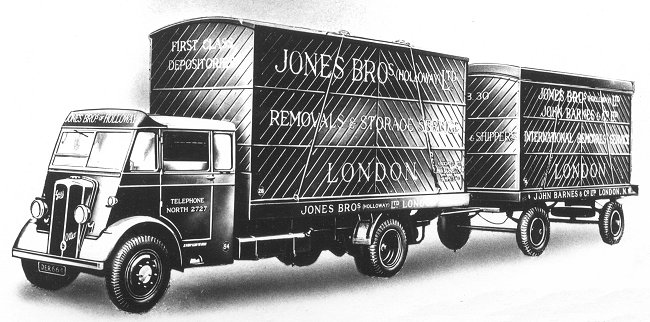
An 'Otter' and trailer.
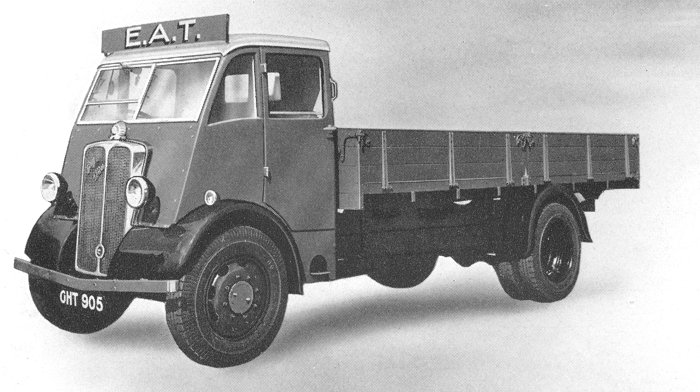
An 'Otter' six tonner.
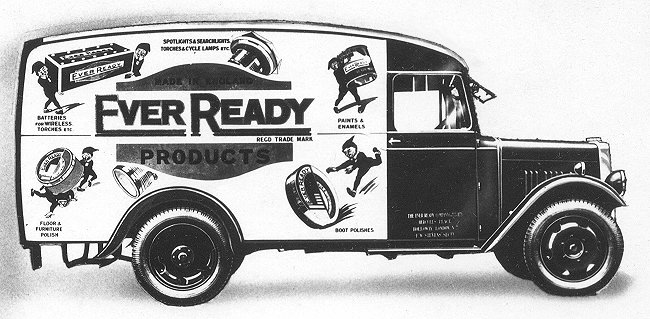
A Guy delivery van.
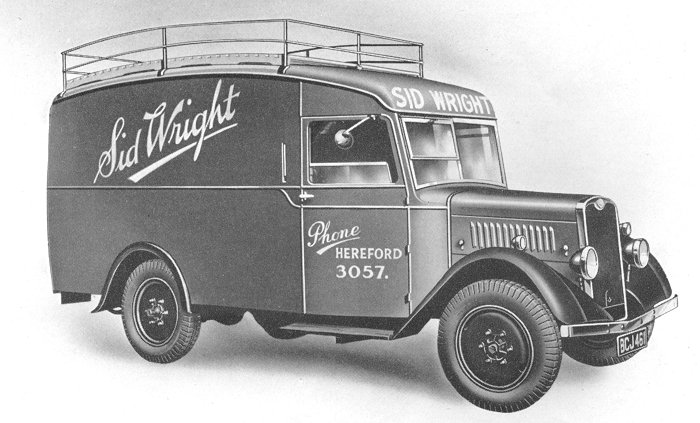
Another Guy delivery van.
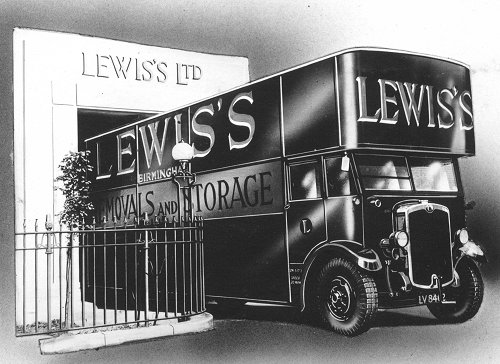
One of Lewis's large fleet of Guy vans.
| A 6 ton Guy 'Otter' cattle truck that
was supplied to Mr. J. W. Crump of Bobbington. |
 |
|
|
| Read about the 'Wolf' 2 to 3
ton chassis |
 |
| |
|
| In 1935 Guy Motors was invited to take part in army trials
at Llangollen. The company submitted the 'Ant', a new 4-wheeled
vehicle with a payload of 15 cwt., and a short wheelbase. After
performing well at the trial, Guy received an order for 150.
After receiving the order from the Government, Guy Motors began
to concentrate on the production of military vehicles. The
'Ant', a development of the firm's 15 cwt. platoon truck was
developed with the help of the Army Mechanisation Unit. By 1938
the production of vehicles for the civilian market completely
ceased when Guy relied exclusively on Government contracts. It
would be some years before the production of vehicles for the
civilian market recommenced. |
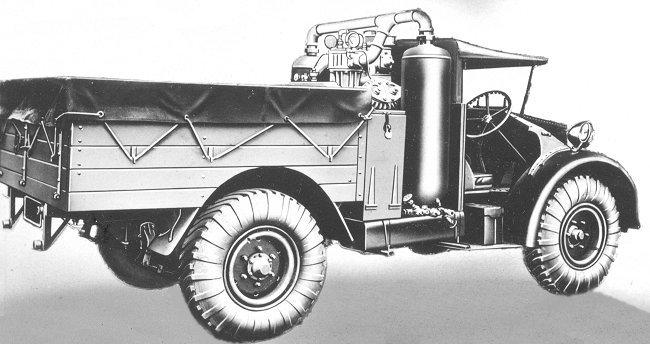
A Guy 'Ant' fitted with a compressor unit.
| The 'Ant' used many 'Wolf' and 'Vixen' components, and had
large section tyres for improved road traction, and greater
ground clearance. The 'Ant' was capable of running on
steep and sharp gradients, and could operate in axle-deep mud or
sand. Development of the vehicle continued with the launch of
the 'Quad Ant', a 4x4 with an all steel, fully enclosed body,
and seating for the driver, a commander, and a crew of 4. It had
built-in ammunition lockers, and a crash bar across the radiator
on which a winch cable could be hooked. The 'Quad Ant' could
haul loads of 6 to 14 tons, up gradients of 1 in 2. They were
mainly used as gun tractors, pulling 17 or 25 pound guns. Some
also pulled anti-tank guns.
A forward control version was also produced, with a longer
wheel base, and a dynamo in the drive line, for use as a mobile
generator for powering searchlights. A further development of
the 'Quad Ant' was the 'Lizard'. |

A Guy 'Quad Ant'.
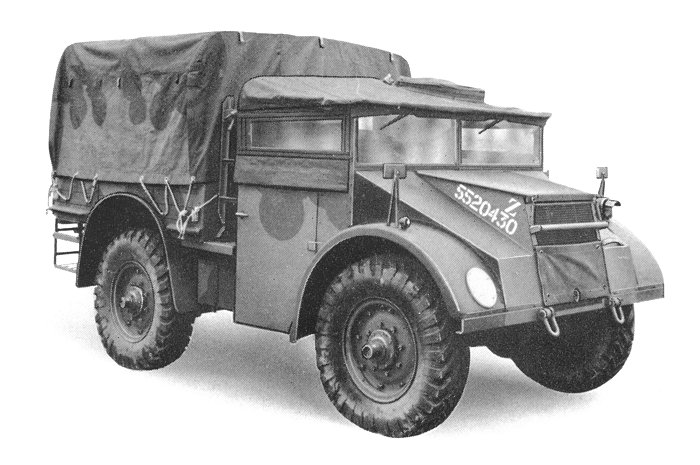
A Guy 'Quad Ant' General Service
wagon.
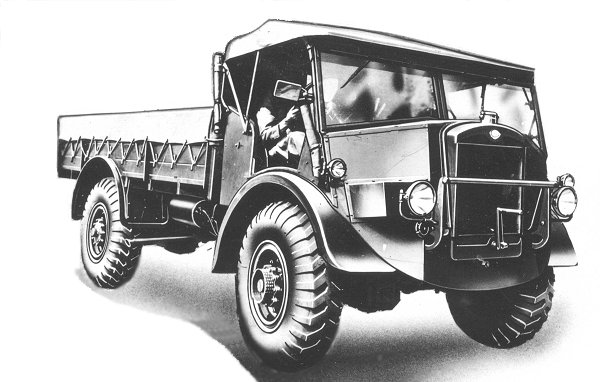
A Guy 'Lizard'. Some of them were taken to
France in 1939 by the British Expeditionary Force.
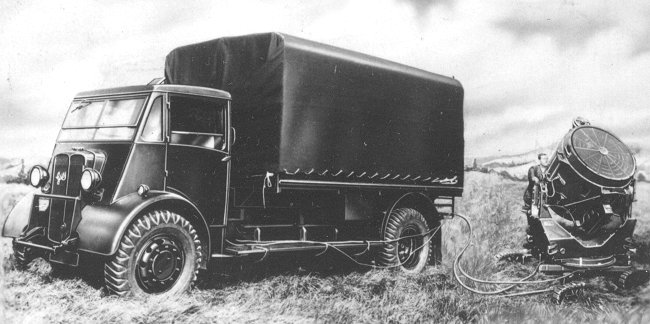
A Guy searchlight lorry.

A Guy searchlight generator chassis.
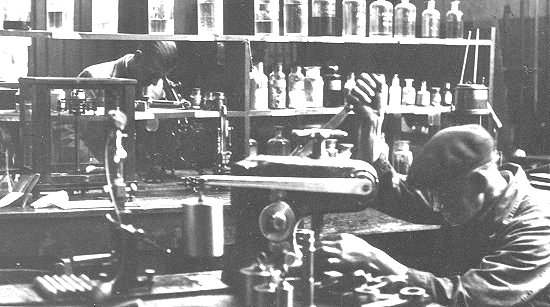 |
Research and development was
continuously carried out at the works to ensure that the
company's products were technically advanced.
This photograph shows a corner of the
laboratory. |
| In 1938 Guy Motors produced the first British rear-engined,
4-wheel drive, armoured car, as a development of the 'Quad Ant'.
It had a hull and turret of bullet-proof, homogeneous hard
un-machinable plate, which was welded instead of riveted
together. Until this time it was assumed that it was impossible
to weld the plate.
Welded construction had many advantages. It reduced the
number of casualties resulting from 'splash', and rivet
heads flying around the inside of the tank. It reduced the price
of material for each tank by eliminating the machining of the
plate. The vehicle was far more waterproof, and could
enter water of a greater depth.
The Government technical department advised that it was
impossible to commercially weld the material, and so Guy offered
to weld the first batch ordered, and if unsuccessful, to stand
the cost. The vehicles were welded, and on examination by the
military, the technique was found to work extremely well. As a
result it became standard practice and saved the country an
estimated 100 million pounds.
The new development was put at the government's disposal, for
the duration of the war, and Guy received an award from the
Royal Commission for developing the technique. |

A Guy armoured car.

The rear view of a Guy armoured car.
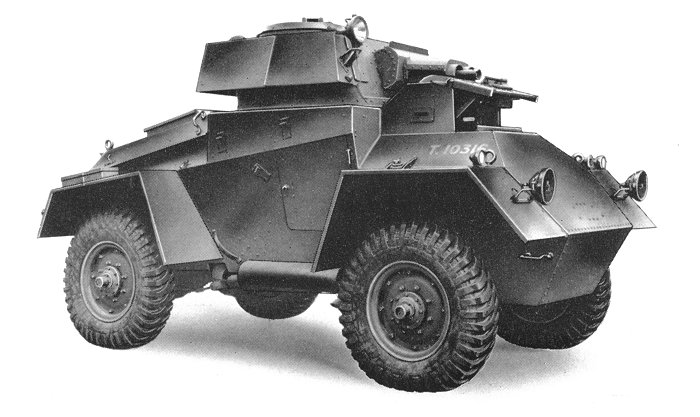
Another view of a Guy armoured car.
 |
|
 |
|
 |
Return to
The Late 1920s |
|
Return
to the
beginning |
|
Proceed to
World War 2 |
|